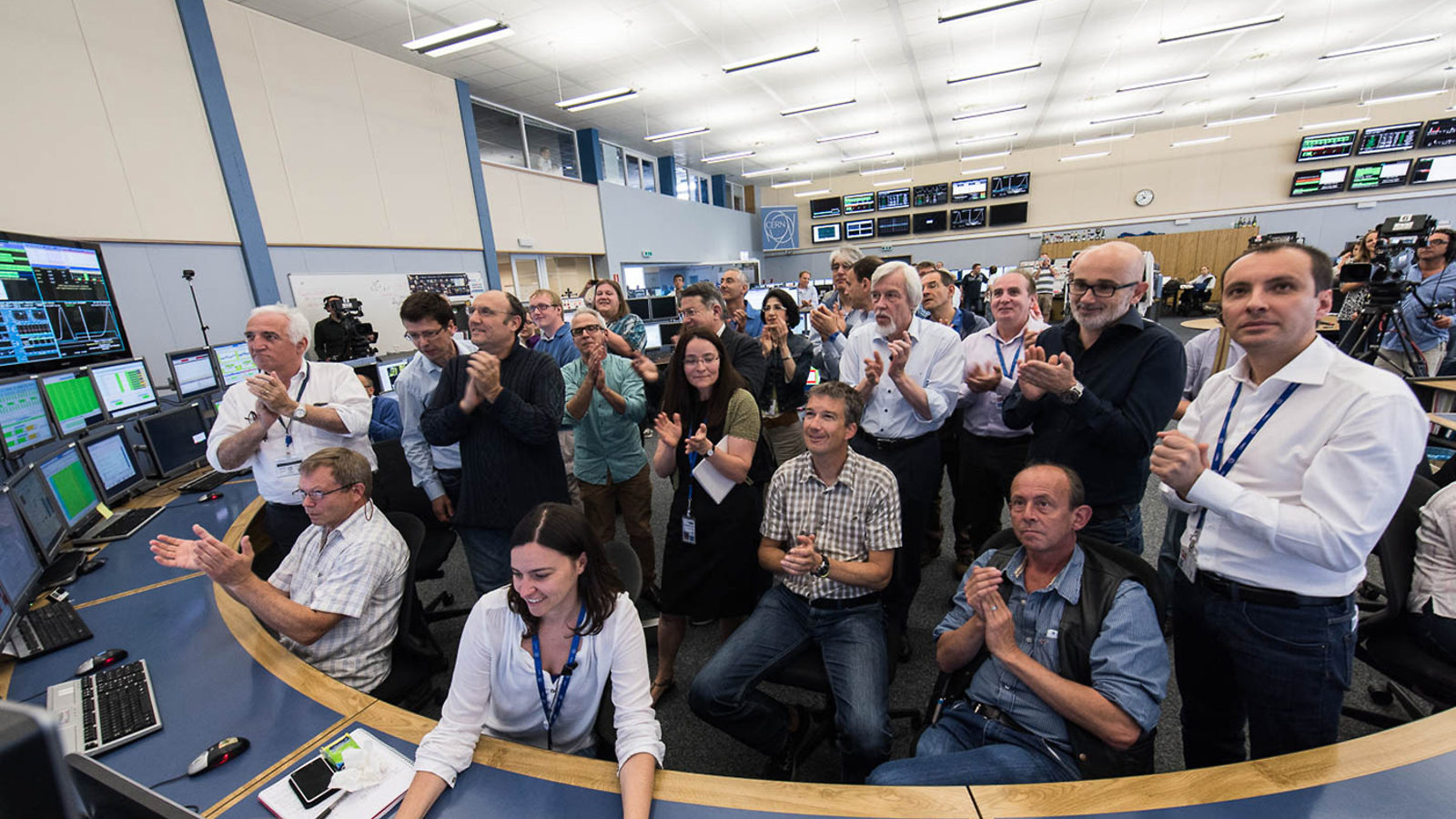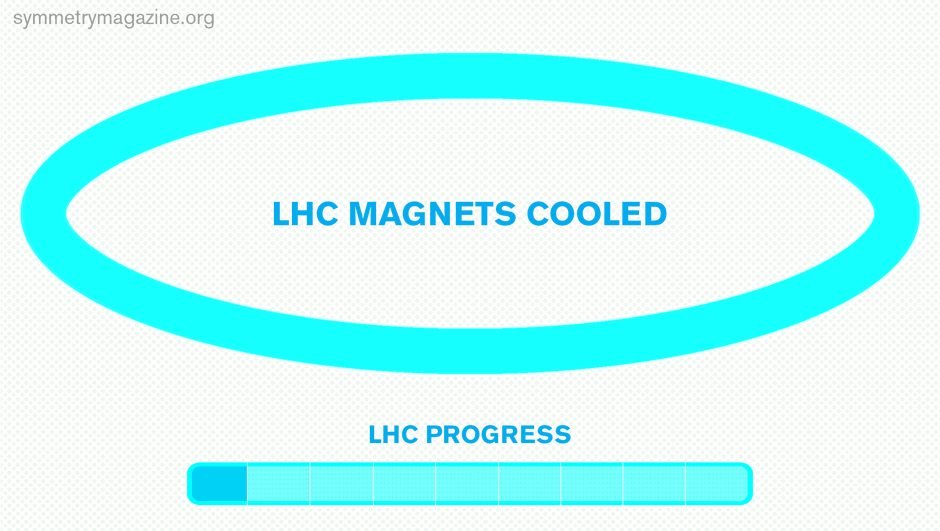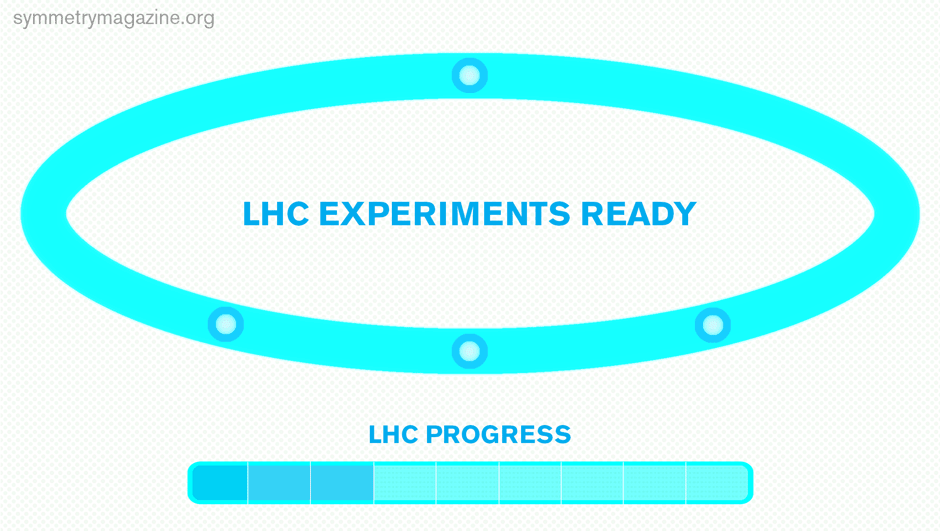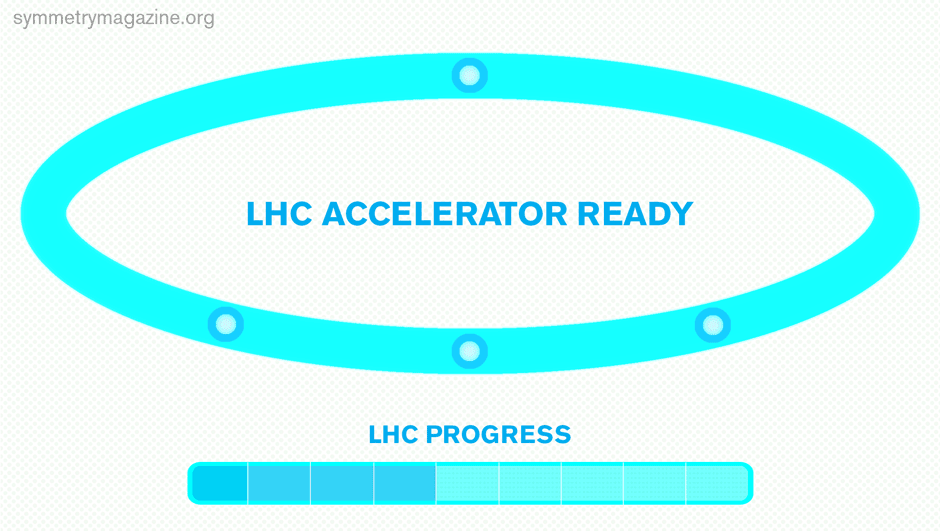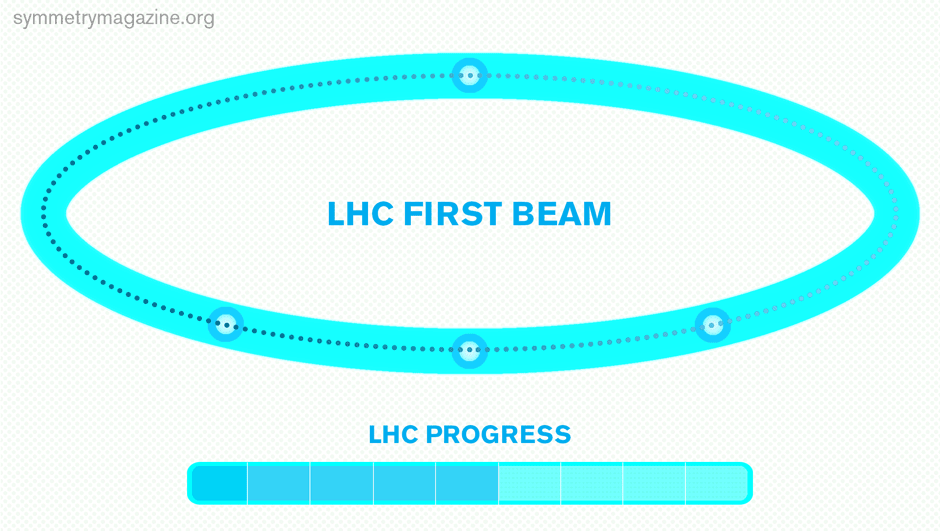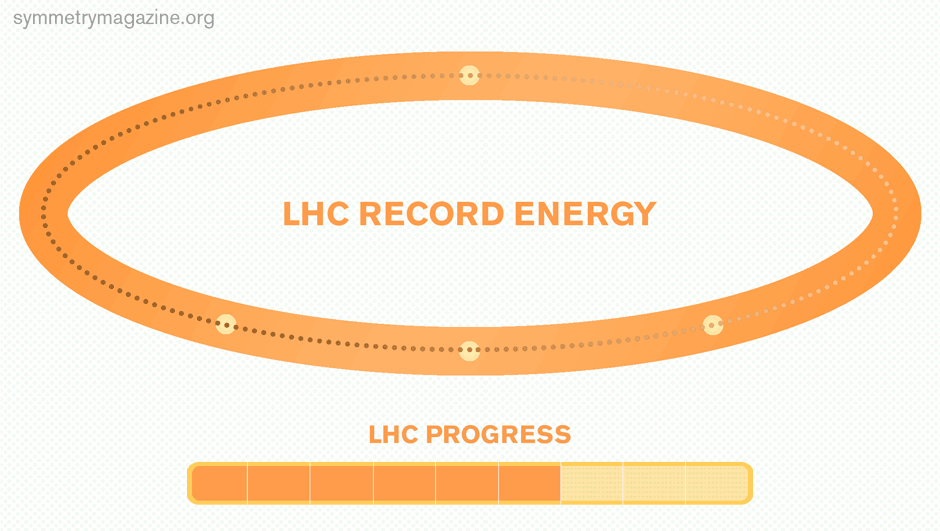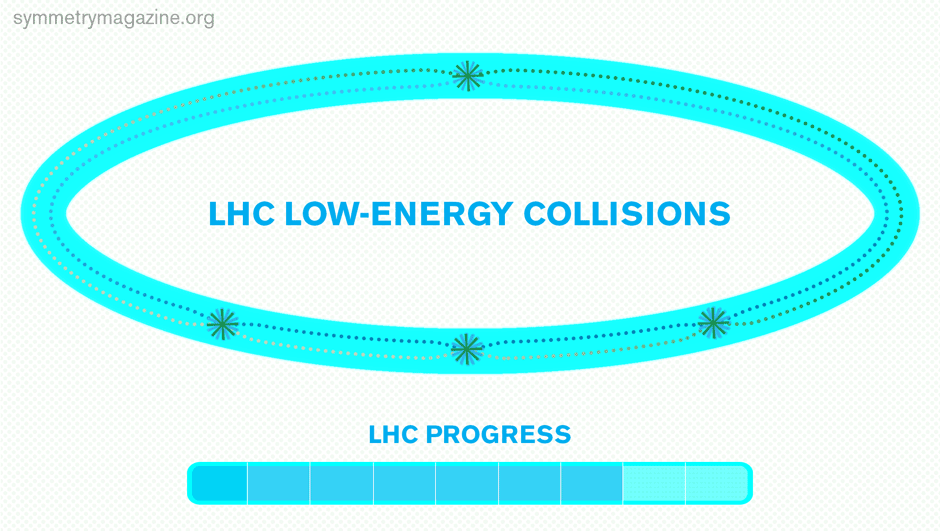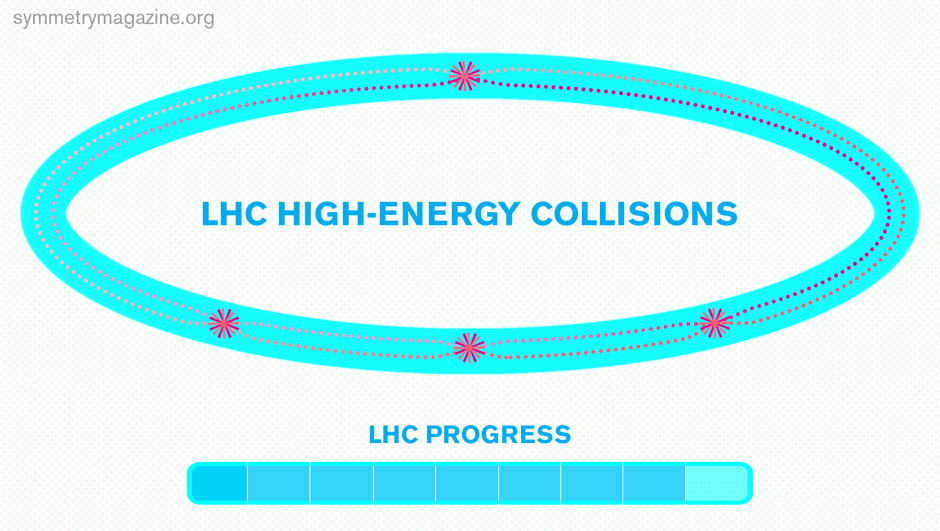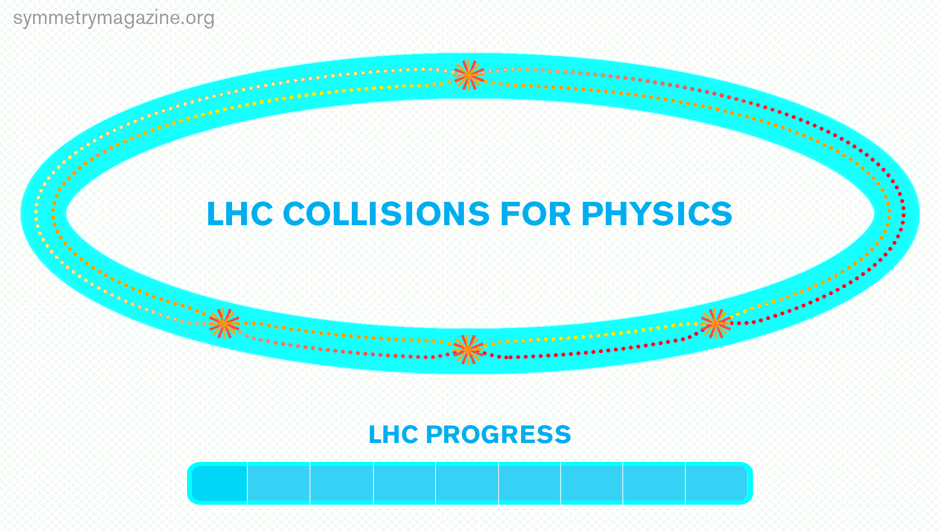Today the Large Hadron Collider began collecting data for the first time in two years.
The world’s most powerful particle accelerator powered back on in April and saw its first record-energy collisions in May. Today it began colliding particles at a steady rate to provide data for research.
This time around, the LHC is colliding particles at 13 trillion electronvolts, a 60 percent boost from its 2012 record of 8 TeV.
“Because we have higher energy, more particles are produced more frequently,” says Beate Heinemann, ATLAS deputy spokesperson and physicist at the University of California in Berkeley at Lawrence Berkeley National Laboratory. “We will be able to test theories we’ve never been able to test before.”
Inside the LHC, highly energetic protons collide and briefly convert their energy to mass. This produces other particles. The higher the amount of energy in the collisions, the more massive the particles they can produce. Physicists discovered the Higgs boson in 8 TeV collisions; there may be more to come at 13 TeV.
Notably, many scientists hope to discover Supersymmetry, a theoretical model that predicts more massive partner particles for each known fundamental particle.
Also on the roster of potential discoveries are dark matter particles. Scientists have seen evidence that most of the matter in the Universe is dark matter, but they have never knowingly produced it in the laboratory.
Scientists might even find something they don’t expect, says Jim Olsen, CMS physics co-coordinator and professor of physics at Princeton University. “It’s exciting to me that in searching for things we have predicted, or we think might be there, we could find something completely unexpected.”
By increasing the energy and brightness of their particle beams, physicists are multiplying their odds of detecting rare particle events. Particles and their decay processes might be bumped up by a factor of tens or hundreds. Scientists expect to produce Higgs bosons more than twice as fast as before.
This is why scientists say we are now in the “precision era” of the Higgs boson. The more Higgs bosons they can produce, the more precisely they can study their properties.
“By the end of 2015, the LHC could deliver the same amount of data on the Higgs as we collected over 2011 and 2012 combined,” Olsen says. By the end of 2017, physicists could be working with three to four times more Higgs data than was collected over the first run.
To take advantage of the upgraded accelerator, the ATLAS, ALICE, CMS and LHCb scientific collaborations made improvements to their detectors. Scientists have also upgraded the computing infrastructure that stores and disseminates the onslaught of data the detectors collect.
Publications on 2015 data could begin rolling out as early as this fall, which could include first analyses of searches for heavy particles. Olsen predicts that new Higgs boson results will likely be released by spring 2016.
If there are any groundbreaking, yet-to-be-foretold discoveries to be made, no one knows where to pencil them in on the calendar. But many have optimistic outlooks for Run II.
“We have the best instrument we’ve ever had, and we’re going to look as hard as we can,” Heinemann says. “If it can be found, we are going to find it.”



